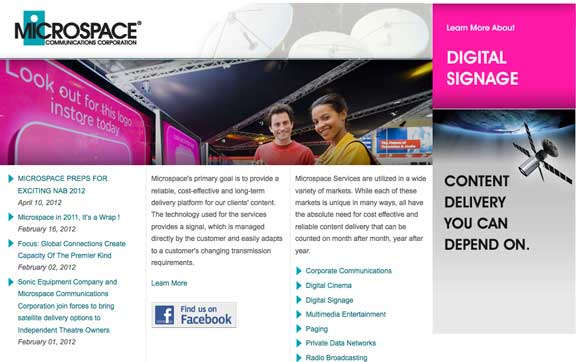...the recent NAB Show in Las Vegas. According to Greg Hurt, VP of Sales and Marketing at Microspace, “We have been known for almost 25 years as a top satellite broadcaster for video, audio and data business networks. At NAB, we presented new satellite delivery solutions, one of which incorporates WiFi, as well as cellular and internet content delivery offerings. Both the cellular and Internet options fully complement our core offering which has always been cost effective, highly reliable satellite delivery.”
The company highlighted its new MICROBURST satellite service. MICROBURST enables a Microspace satellite service user to periodically increase the bandwidth of their satellite channel based on scheduled or short notice requirements for additional bandwidth. According to Hurt, “It’s the best of both worlds; our users have the flexibility of increasing their bandwidth for periods of time and only pay for what they use”. This new satellite offering developed by Microspace can meet the demands of an organization’s “bursty” content delivery demands. VELOCITY MICROBURST allows VELOCITY data users to acquire occasional “bursts” of additional bandwidth. Many content delivery requirements call for a weekly or possibly a monthly update of new content to supplement their daily delivery. This type of content update is best served by a technology that allows users to increase the data rate of their fixed rate Microspace channel for short, medium or longer periods of time. Users not only pick the amount of time but also select the data rate to be utilized during that period of bursty traffic.
Also in the spotlight at NAB was Microspace’s new CELLCAST service, which provides a multi-site business with a cellular content delivery or return channel option. Many current applications are calling for multicast satellite distribution of larger media files and the cost effective capabilities of cellular to address the return channel necessity. Microspace expects these hybrid technology configurations to become much more prevalent.


